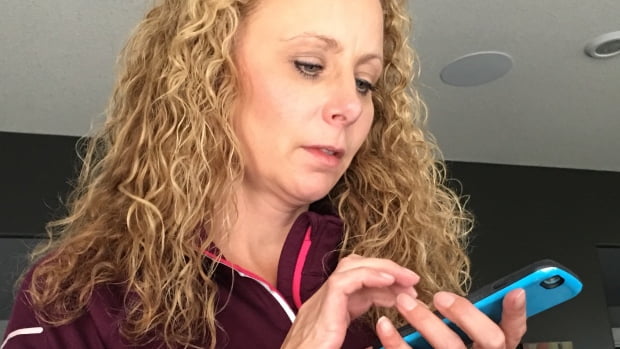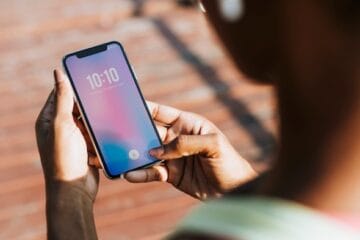
What’s known as iPhone “touch disease” appears to be spreading and pressure is mounting for Apple to find a cure. However, the tech giant still refuses to talk about it.
Touch disease is an affliction of Apple’s iPhone 6 and 6 Plus models which hit stores in 2014. The theory is that the phones suffer from a design flaw, which can make the screen freeze up and ignore touch commands.
A total of four proposed class-action lawsuits have been filed, two inCanada and two in the U.S., alleging the California-based tech giant knew about the defect and failed to take action.
- Apple hit with proposed class-action lawsuits over iPhone ‘touch disease’
- New iPhone 7 water resistant, dustproof
The first suit, filed in California in August, expanded this month. Three additional law firms and several more lead plaintiffs have been added to the case.
Many plaintiffs allege that their phone became permanently or periodically unresponsive to touch and that Apple demanded hundreds of dollars to fix or replace it.
“You miss calls, you can’t text, it’s a horrible piece of crap,” said Trina Rae Wiegers from Prince Albert, Sask., the lead plaintiff in one of the Canadian suits.
Complaints are also piling up on online discussion sites and social media.
The ailment has even inspired a hashtag on Twitter. “#touchdisease it’s a thing, it’s serious,” someone tweeted last week. “You need to take responsibility,” another person tweeted to Apple’s CEO, Tim Cook.
And yet, Apple is remaining mum. Earlier this month, the company told CBC News it has “no comment” on the issue.
We contacted Apple repeatedly this week in the hopes it would offer something more, but the company never responded.
‘Heartbreaking’ end to iPhone
“With Apple, they just kind of leave you hanging,” says Hawwa Motiwala in Toronto. The 19-year-old high school student claims she’s also a victim of touch disease.
Motiwala had her heart set on an iPhone but couldn’t afford the ticket price. So she bought a second-hand 6 Plus for $750 in February. “It was my first Apple product and I was really looking forward to it.”
Motiwala only got to enjoy her phone for a short time. She says that in September a flickering grey bar started to pop up on the screen and then the device would freeze up periodically.

Hawwa Motiwala says a flickering grey bar appears on her iPhone 6 Plus and then the screen won’t respond to her touch commands. (Yusuf Motiwala)
After a few days, the phone permanently stopped responding to touch, making it useless, says Motiwala.
“It was really like heartbreaking at the moment and really disappointing.”
“She was crying the first night,” reports her father, Yusuf. He says he took her phone to a local Apple store and was told Motiwala would have to pay around $480 for a replacement — money she doesn’t have.
“When I later Googled more about the problem, it seems Apple knows about the problem,” says Yusuf.
He believes the company should offer his daughter a better deal to remedy a defect that appears to be widespread. “Apple should own up to it.”
Toronto iPhone owner Paul So agrees.
‘Let’s do a recall’?
So bought an iPhone 6 Plus in 2014. He says that soon after his warranty expired, the device started to periodically ignore touch commands.
“I’m trying to swipe to answer the call and I can’t even swipe,” says the IT worker, who uses the phone for his job.
“Sometimes I have those instances where I just want to throw it against the [wall]. It’s getting frustrating.”

Paul So in Toronto says his iPhone 6 Plus constantly freezes up and ignores his touch commands. (Paul So)
So says he called Apple tech support and was told he’d have to pay about $400 to get the phone fixed. But he refuses to foot the bill for a problem he believes is Apple’s responsibility.
“They’re a big company and they should fess up and say, ‘You know what, we made a mistake and let’s do a recall.'”
A fix — maybe soon?
Tech enthusiast Justin Tse believes Apple may very well do that, but is still gathering evidence at this time.
“I think Apple is remaining quiet about it because they’re likely still trying to determine the actual problems surrounding it before releasing any statements.”
Tse lives in Victoria where he runs JTechApple, a consumer tech news and review site on YouTube.
He says he got his hands on a defective iPhone 6 and 6 Plus in August. After inspecting the devices, he concluded that they were suffering from the dreaded touch disease.
Tse believes the problem may be linked to “bendgate.” Shortly after the iPhone 6 and 6 Plus launched, people started complaining that the thin phone was susceptible to bending.
“As a result of the bending, the [circuit] board design causes a very important component to separate,” says Tse. That fractured connection could cause the phone to stop responding to touch commands.
- Apple fans say their skinny jeans are bending the iPhone 6 Plus
In the past, Tse says Apple has been very good about addressing defects, such as a malfunctioning camera in some iPhone 6 Plus models. Last year, Apple launched a free repair program for afflicted phones.
Tse predicts that the company will also eventually address touch disease.
“I would expect that’s what they would do and hopefully they end up acknowledging the situation.”
Meanwhile, Motiwala has already moved on. She’s now using an Android smartphone and says she’s learned an important lesson from her ordeal. “I know I shouldn’t spend too much money on phones.”
[Source:-CBCnews]




